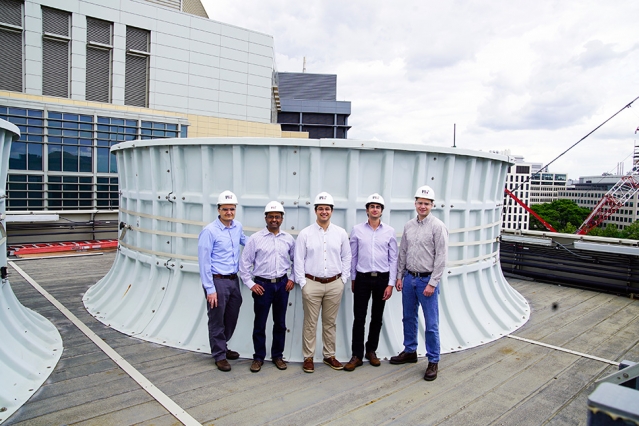
A new system developed by MIT engineers could provide a low-cost source of drinking water and simultaneously reduce power plant operating costs.
Nearly 40% of all the fresh water withdrawn from rivers, lakes, and reservoirs in the U.S. is used for the cooling needs of fossil fuel and nuclear powered electric power plants. Most of that water ends up floating away as clouds of vapor.
MIT’s new system could save much of that water and make it available as clean, safe drinking water.
The way it works is to zap the fog-rich air coming out of the power plant with a beam of electrically charged particles. The water droplets in the air then become electrically charged and can be drawn toward a charged mesh of wires in their path. The droplets collect on the mesh and drain down into a collecting pan. The collected water can then be reused by the plant or sent on to the city’s water supply.
The system is the basis for a startup company called Infinite Cooling and won MIT’s $100,000 Entrepreneurship Competition.
The new technology was developed as part of doctoral thesis looking into the efficiency of fog-harvesting systems used in many water-scarce coastal regions to collect drinking water. Existing systems are extremely inefficient, collecting only 1-3% of the water droplets that pass through them. The innovation of the ion beam zapping of the fog has tremendously improved the efficiency of the process.
According to the MIT engineers, a typical 600-megawatt power plant could capture 150 million gallons of water a year, representing a value of millions of dollars and saving 20 to 30% of the water lost from cooling towers.
**********
Web Links
New system recovers fresh water from power plants
Photo courtesy of Melanie Gonick/MIT.
‘Fresh Water from Power Plants’ from Earth Wise is a production of WAMC Northeast Public Radio.
Leave a Reply